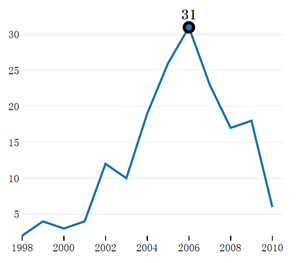Leslie Lamport
4 August 1979
原址
1. WHAT TO SAY(说什么)
– Don’t give your paper; the audience can’t take it. If someone
can understand in thirty minutes what it took you weeks to
develop, then you’re in the wrong business.
不要和别人谈论你的论文,别人不可能在短时间内理解的。如果别人能在三十分钟内理解你花了几个星期才写出的成果,那只能说明你的成果并不是很有价值。
另外分析一个句子If someone can understand in thirty minutes what it took you weeks to develop, then you’re in the wrong business.,这是一个同位语从句,what 是understand 的宾语,同时也是后面的句子的同位语。
– Do advertise your paper. The purpose of an automobile ad is
to get potential customers to the showroom, not to give technical
specifications. The purpose of your talk is to get people who
might be interested in your work to read the paper, not to save
them the trouble of reading it.
要为你的文章打广告,汽车广告的目的是将潜在的客户吸引到它的showroom,而不是给出技术细节。你演讲的目的是使得可能对你论文感兴趣的文章的人去阅读你的文章,而不是节省他们阅读文章的困难。
– Giving a good presentation is an art, requiring both practice
and talent. No rules can turn you into an artist, but the
following suggestions might be helpful.
1. Describe simple examples rather than general results.
Try to make the examples much too simple — you will not
succeed.
2. Don’t use formalism. If your results cannot be described
simply and informally, then there is no reason why anyone
should be interested in them.
3. It is better to be inaccurate than incomprehensible. The
place for accuracy is in the paper. (However, false
advertising is unethical.)
2. HOW TO SAY IT
– Slides are effective. Here are some suggestions for their proper
use.
1. Don’t put too much on a slide — a picture of a thousand
words is worthless. For 8 x 11 slides, all letters should
be at least 3/8 inch high, with plenty of blank space.
People in the back row have to read them too.
2. Slides should be neat and legible. The listener isn’t
your secretary; it’s not his job to decipher your
handwriting.
3. A rapid sequence of slides has a hypnotic effect. Unless
you are a licensed hypnotist, don’t use more than one slide
per minute.
– Time your talk. Running over your allotted time is a mark of
incompetence, and displaying your incompetence is a poor way
to get someone to read your paper. Remember that talking to
an audience takes longer than talking to a mirror.
3. DA CAPO
– You are now thinking: “All those dull speakers I’ve listened
to should use these rules, but I don’t need them because my talks
are interesting.” All those dull speakers are now thinking exactly the
same thing. Read the rules again with the proper humility. They
apply to everyone.
“The only wisdom we can hope to acquire
Is the wisdom of humility: humility is endless.”
4. CODA – For Session Chairmen
– Be utterly ruthless about enforcing time limits. Warn the
speaker when he has 10 minutes left and when he has 5 minutes
left, and stop him in midsentence when his time is up.
The audience will be grateful. (A loud alarm clock works quite
well if you don’t turn it off until the speaker has finished
talking.)
– Protect the speaker and the audience from inappropriate
questions. Questions should be allowed during the talk only
if the audience is small and the question is a simple request
for clarification. After the talk, you must be prepared
to silence the following two kinds of questioner.
1. One who leads the speaker into a long discussion of an
obscure detail which is of no interest to most of the audience.
2. One who monopolizes the time arguing with the speaker over
unresolvable philosophical issues.
Remember that silencing one person enables the rest of the
audience to ask questions.

